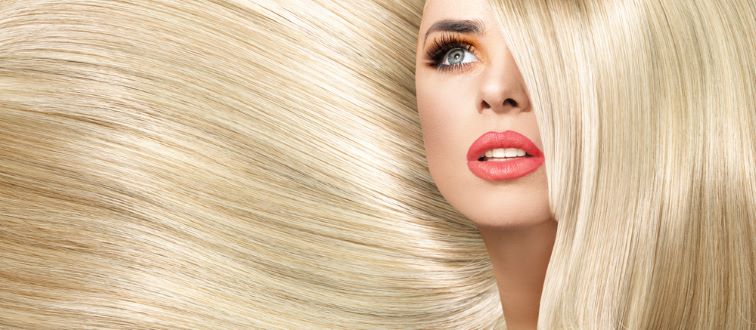Does your hair feel dry, damaged, lacklustre and prone to split ends? We spoke to Trichologist Sally-Ann Tarver from The Cotswold Trichology Centre www.cots-tri.co.uk who shared her top tips on how to deal with dry damaged hair.
Ditch the straighteners
Hair straighteners / curlers are the biggest cause of dry damaged hair. Keep the heat setting to as low as possible 130-140 degrees and use as few times in a month as possible. Don’t use on damp hair or preferably not even immediately after drying. Pockets of moisture remain inside the hair’s cortex which instantly vaporise to steam causing tiny holes to be made in the cuticle as it escapes. This causes dry feeling porous hair and eventually disintegration (splitting / breaking) at the ends.
Blow dry with care or dry naturally
Use your drier on a medium heat and high speed, not a high speed and high heat! Check the air intake vent is clean regularly, hairdryers become hotter if the motor has to work harder to suck in air. They also become hotter with age so replace at least every 5 years if not before. If your budget can stretch to a Dyson Supersonic, get one! The sensor in the Dyson drier checks the temperature 20 times a second and reduces accordingly to prevent heat damage, it also dries hair in around half the time with a much lower heat.
Give your hair a weekly intensive treat
Intensive repair masks if used regularly can help improve hair condition particularly if damage is heat or chemically induced (colour). If your hair is just feeling dry, dehydrated and frizzy, take a handful of coconut oil (the solid stuff used in cooking) melt it by rubbing it in your hands, smooth it through the mid lengths and ends then leave it on overnight. Wash and condition your hair as normal the next day, your hair will look sleek and shiny for the next few washes.
Health check
If you feel your hair is growing drier than it use to, consider asking your GP to check your Thyroid, dry brittle hair can be a symptom of Hypothyroidism.
*Credit: Sally-Ann Tarver MIT.FTTS, Consultant Trichologist, The Cotswold Trichology Centre www.cots-tri.co.uk

